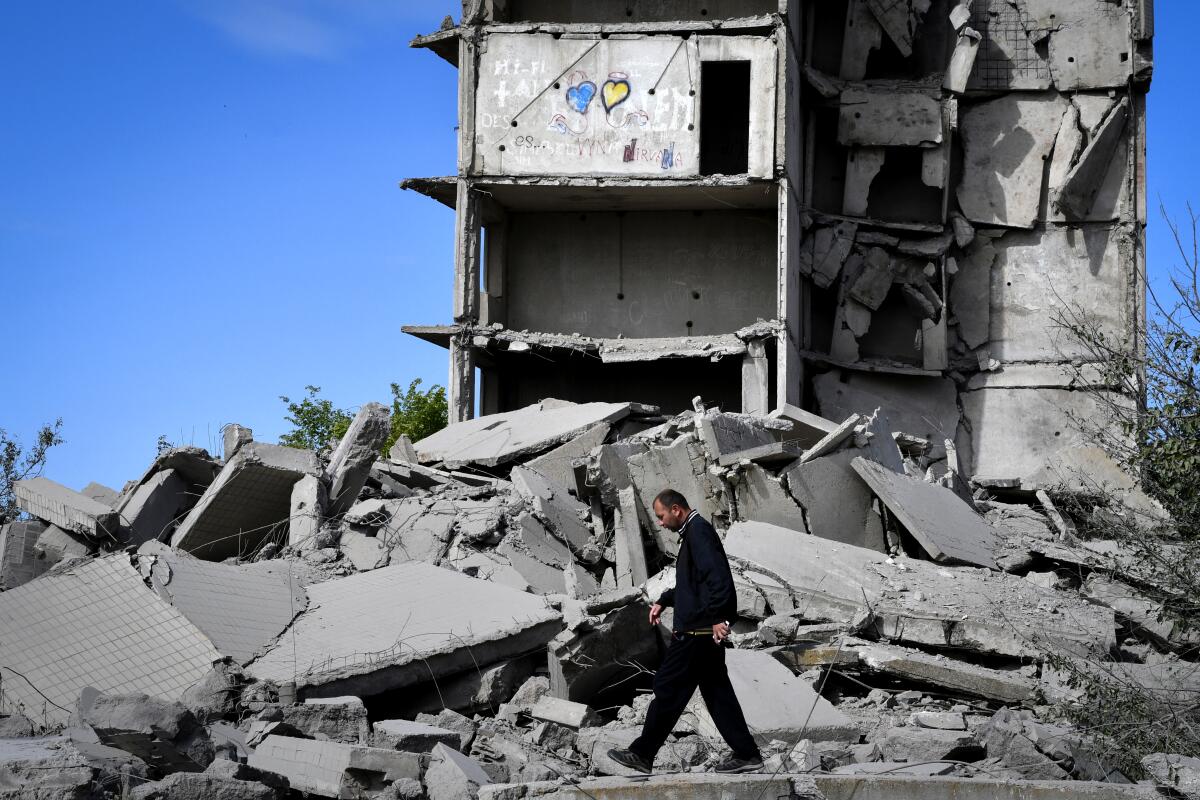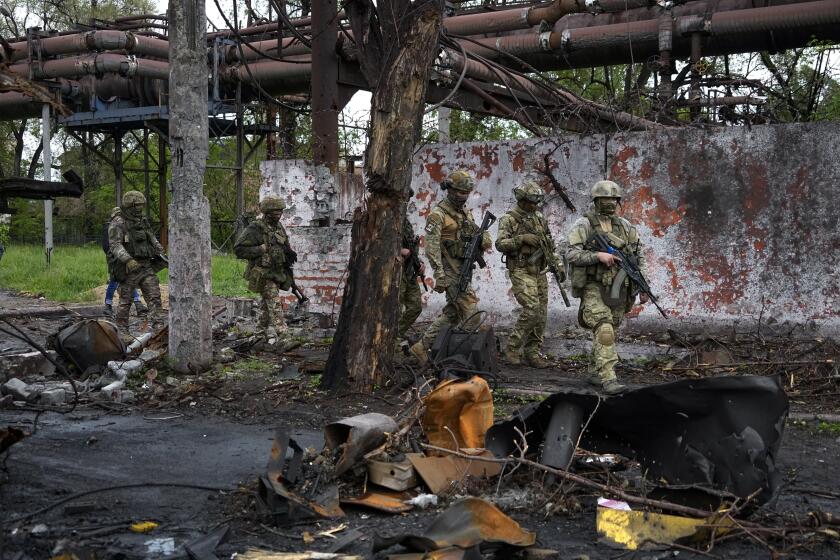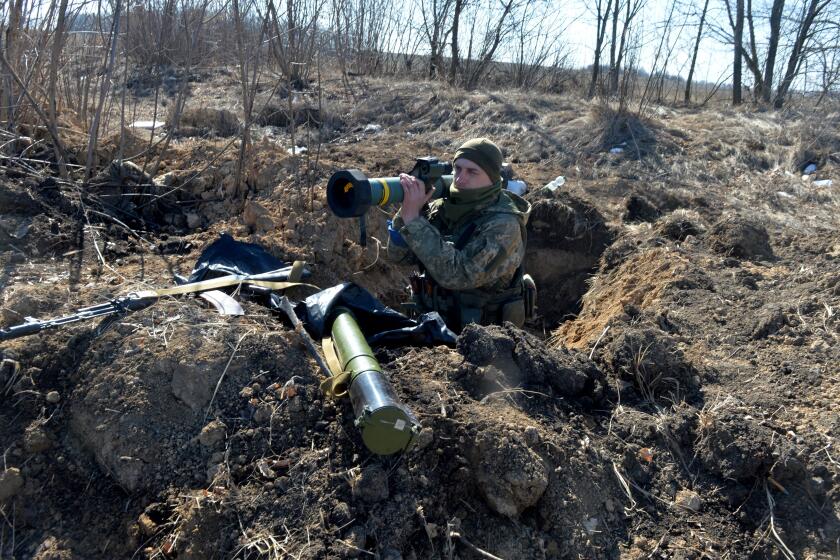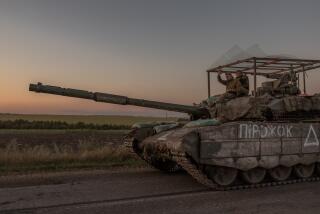Op-Ed: When will the costs of war force peace in Ukraine?

It’s easy to see the war in Ukraine as a sign of an inescapably violent world. But if the future looks bleak, perhaps that’s because we focus on the conflicts that happen and overlook the gravitational pull of peace.
An example came on March 9, two weeks into the Russian invasion. Shortly after sundown, India accidentally launched a cruise missile at Pakistan. Predictably, calm ensued. Both sides strove to avoid escalation — as they have for decades.
Focusing on the times peace fails is a kind of selection bias, one that makes us think that war is more common than it really is. The India incident is a good reminder of a simple fact: War is so ruinous that enemies prefer to loathe each other in peace.
Even Vladimir Putin, author of the world-changing conflict in Ukraine, tried to avoid war in his own insidious way. For two decades, he employed every underhanded means possible to co-opt Ukraine: dark money, propaganda, political stooges, poisonings and separatist support. He did all of that because, as vicious and costly as these things were, not one was as reckless as war.
As the war in Ukraine enters its fourth month, Russian forces appear to be on the cusp of a breakthrough in the contested Donbas region.
I’m not pointing all this out to downplay the horror of Russia’s invasion of Ukraine. Putin’s brutal war deserves our utmost attention. But it would be misleading, not to mention demoralizing, if we did not also consider the pull of peace. More important, the two together will give us insights into when and how the current conflagration might end.
First, why did Russia invade? Every answer to “why we fight”’ is an example of a society or its leaders ignoring the terrible price that will be paid. Putin, isolated and insulated, apparently underestimated the uncertain costs of invading Ukraine. Also, as a dictator, he knew he wouldn’t have to pay most of them (his people would). And he appears willing to endure whatever costs he will bear to achieve his particular ends: personal and national glory, plus self- and power preservation — eliminating a democracy on his front doorstep.
In the end, however, the expense of this war will be a powerful incentive to limit the fighting. The most visible costs are the tens of thousands killed, and the cities turned to rubble. Less obvious, but crucial, are the treasuries being drained on both sides.
Berkeley economist Yuriy Gorodnichenko estimates that Ukraine requires half of its pre-war monthly national income to continue the conventional war it has been fighting. Of course, Ukraine is earning nowhere near this amount. And even if its factories and fields were producing at full tilt, the country cannot bring those goods to market — the Russian occupation of Mariupol and its blockade of other Ukrainian ports means few goods get out.
Russia has the deeper pockets, but its price of fighting is still exorbitant. One Russian central banker believes the consequent recession in his country will be as deep as its post-Cold War economic collapse — only worse, because the recovery will be slower. Should the fighting persist, he predicts “reverse industrialization.” That is bad news for a president who built his popularity on delivering prosperity. It may be why Putin did not use his May 9 Victory Day speech to escalate the conflict.
A historic $40 billion package marks a rare bipartisan moment in Washington.
The costs on both sides could mean the Ukraine war will be counted in months not years. Even so, bargaining power in the months ahead will lie with the side most willing and able to pay war’s monstrous price. This means Ukraine’s allies, chief among them the United States, will be facing fraught decisions as the fighting goes on, with complicated strategic dynamics — few of which are being publicly discussed.
Looking forward, Ukraine’s economy cannot support an indefinite conventional war on its own. Insurgency is an option, but sustained regular warfare probably hinges on the West’s willingness to help cover the bill. If so, NATO’s resolve (and money) will help shape the length and brutality of this war.
As long as Putin believes Russia’s military and treasury can outlast Ukraine’s, he has an incentive to wage a war of attrition. NATO could counter this incentive. A firm commitment now to pay and keep paying for the war could undermine Russia’s plan to wear down Ukraine, hastening the end of fighting.
The flip side, however, is that Western hesitancy or ambiguity about its support could coax Russia back toward that war of attrition. The U.S. just committed $40 billion to Ukraine. Britain added a further £1.3 billion ($1.6 billion). By Gorodnichenko’s numbers, that’s equal to about six or seven months of Ukraine’s war bill. Will that ratchet up the costs enough on Putin? Or will the West need to go further?
If only “back Ukraine at all costs” were a simple and safe choice. Peace may exert a gravitational pull, but that does not mean nothing escapes its orbit. If Russia mistrusts Western resolve, misperceives the threat or is ideologically intent on takeover anyway, the fighting could be long and intense. NATO could find itself supporting another forever war, one with a small but scary risk of escalation between NATO and Russia.
We must support weapons, financial aid and debt forgiveness for Ukraine in this time of need, but let’s be clear-eyed about what it means to send a firm and committed signal. It means that six or seven months from now, if Putin hasn’t backed down, the West’s unity and passion cannot wane. Should we waffle or equivocate, the highest cost of ongoing war will be borne by Ukrainians.
Christopher Blattman, professor of global conflict studies at the University of Chicago, is the author of “Why We Fight: The Roots of War and the Paths to Peace.”
More to Read
A cure for the common opinion
Get thought-provoking perspectives with our weekly newsletter.
You may occasionally receive promotional content from the Los Angeles Times.












